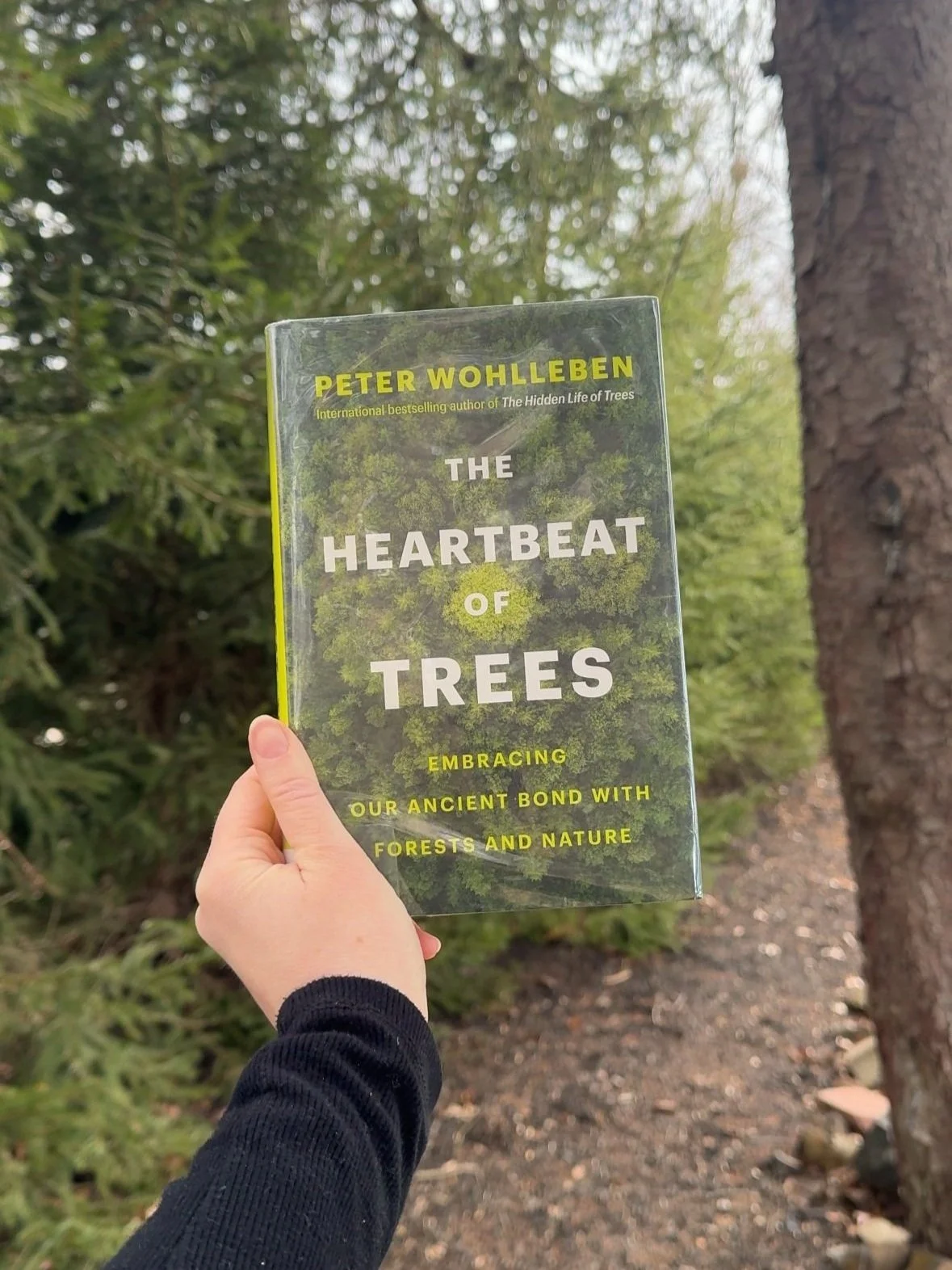Book Summary: The Heartbeat of Trees
by Peter Wohlleben
*Disclaimer: Contains spoilers
The Heartbeat of Trees: Exploring the Hidden Wonders of Nature
The natural world holds mysteries and stories more intricate than we often realize. From the silent whispers of trees to the adaptive brilliance of insects, nature’s heartbeat resonates in the symbiotic connections between organisms, their environment, and even us. Here’s a dive into the lesser-known marvels of the natural world.
The Senses of the Wild
Our modern lives overwhelm us with artificial smells and constant stimulation. The forest, however, offers a sensory reset. Breathing in phytoncides released by conifers—a natural disinfectant to ward off fungal spores—not only refreshes but may also bolster our immune system. Even taste buds benefit from nature: Douglas-fir branch tips taste like tangy orange peel, and the cambium layer beneath tree bark, while bitter, is highly nutritious.
Nature’s sounds and sights heal us too. Prolonged close-up focus on screens or books leads to nearsightedness, but gazing into the vast distances of forests can reverse it. And while noise pollution in cities can harm cardiovascular health, the sporadic loudness of a forest storm—though matching a jackhammer at 80 dB—is fleeting.
The Survival Tricks of Trees and Plants
Trees, though seemingly still, exhibit remarkable behaviors. Birch branches “rest” by lowering at night, while some plants like tomatoes grow thicker and sturdier stems when touched, mimicking wind resistance—a process called thigmomorphogenesis. Jasmonic acid, produced during such interactions, not only regulates growth but also fortifies plants against pests, drought, and temperature stress.
Plants are also more perceptive than we give them credit for. The roots of peas can discern between recorded water sounds and real water, growing toward the latter. And a vine known as the “plant chameleon” can mimic the shape of leaves it climbs on, even artificial ones—raising questions about whether plants “see.”
Symbiotic Wonders
The natural world thrives on intricate partnerships:
• Mosquito-Pollinated Orchids: In North American bogs, orchids imitate human smells to attract mosquitoes for pollination, rewarding them with nectar.
• Bees and Flowers: Bees, positively charged from flight, land on negatively charged flowers. This interaction neutralizes the charge, signaling to other bees that the flower has been pollinated.
• Birds and Ants: Some birds roll in anthills, encouraging ants to spray their wings with formic acid, which deters parasites.
• Spider “ballooning”: Spiders shoot out silk threads into thin air, harnessing the electromagnetic fields(and wind) to fly through the air
Forest Giants and Ancient Ecosystems
The mighty kauri trees of New Zealand, some of the largest by volume, face threats from a foreign fungal disease called kauri dieback. Elsewhere, Old Tjikko, a 9,550-year-old spruce in Sweden, quietly stands as a testament to Earth’s resilience.
During Earth’s prehistoric high-oxygen periods, insects like dragonflies had wingspans of 2.5 feet, and centipedes reached lengths of 10 feet. Today, insects remain limited in size due to reduced oxygen levels and their reliance on inefficient air tubes for respiration.
Fire, Smoke, and the Role of Forests
Fire is both a destroyer and a regenerator. Australian firehawks intentionally spread wildfires by carrying burning sticks, flushing prey from hiding. Yet, wood-burning—whether for warmth or cooking—emits carcinogenic compounds and contributes to particulate pollution, often exceeding that of cars and trucks.
In winter, deciduous trees, stripped of their leaves, temporarily stop producing oxygen and instead emit carbon dioxide. This natural hibernation highlights our reliance on oceans, where marine phytoplankton supply much of the planet’s oxygen.
Medicinal Forest Remedies
Nature offers a bounty of remedies:
• Bee Stings: Mash plantain leaves to disinfect and reduce pain.
• Sore Throats: Brew oak bark tea.
• Swollen Feet: Apply crushed maple leaves.
• Chewing Gum: Warm spruce resin in your mouth for a natural treat.
Plants like meadowsweet, rich in salicylic acid, are precursors to aspirin and underscore how forests have long been a source of healing.
The Heartbeat Lives On
From the calming embrace of forest air to the intricate dances of survival, the natural world reminds us of the delicate balance sustaining life. By understanding and respecting this heartbeat, we not only reconnect with nature but also with ourselves.
Take a moment—step outside, listen, breathe, and feel the pulse of the trees.
